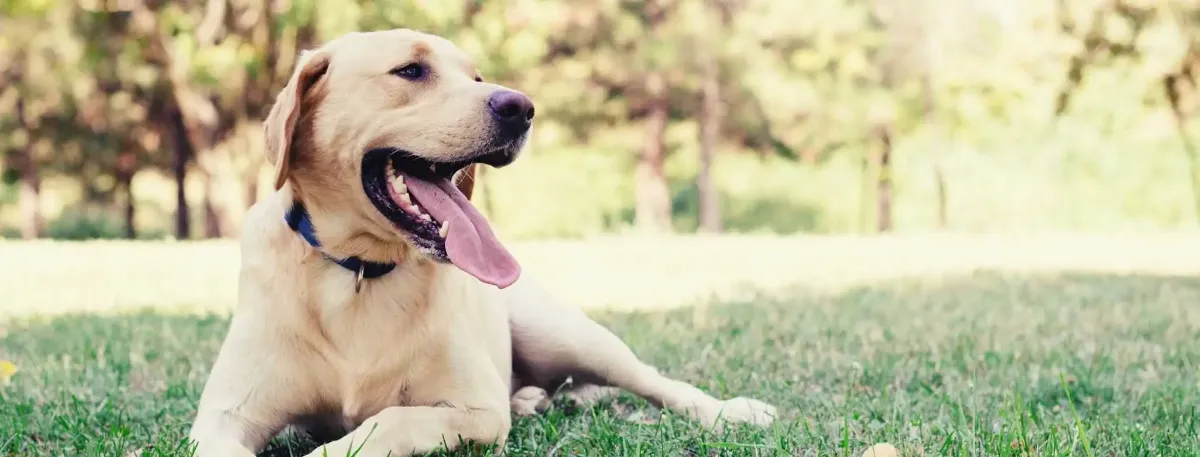
Looking for the perfect family dog? Or do you need a well-performing assistance dog? In this case, be sure to read my writing on the Labrador Retriever. I will reveal why this is America’s most popular and common dog breed. We will look at the physical and mental endowments of these dogs. I write about the most common diseases of the breed, grooming, training, and all the important things you need to know.
Let’s start!
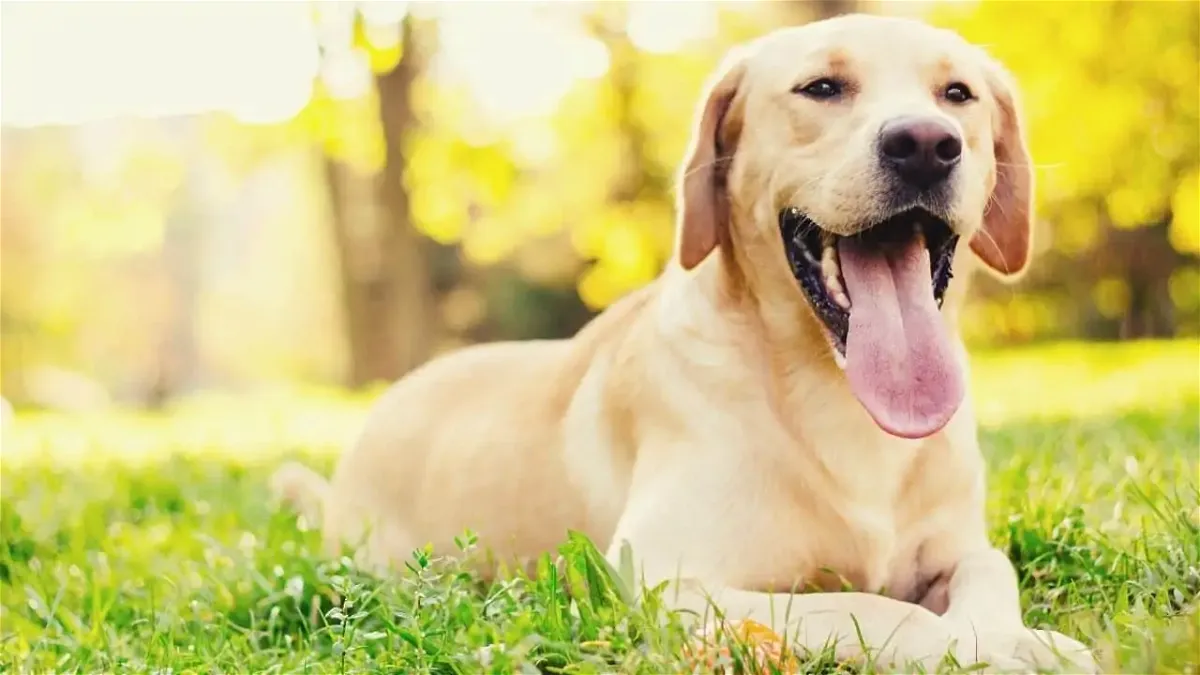
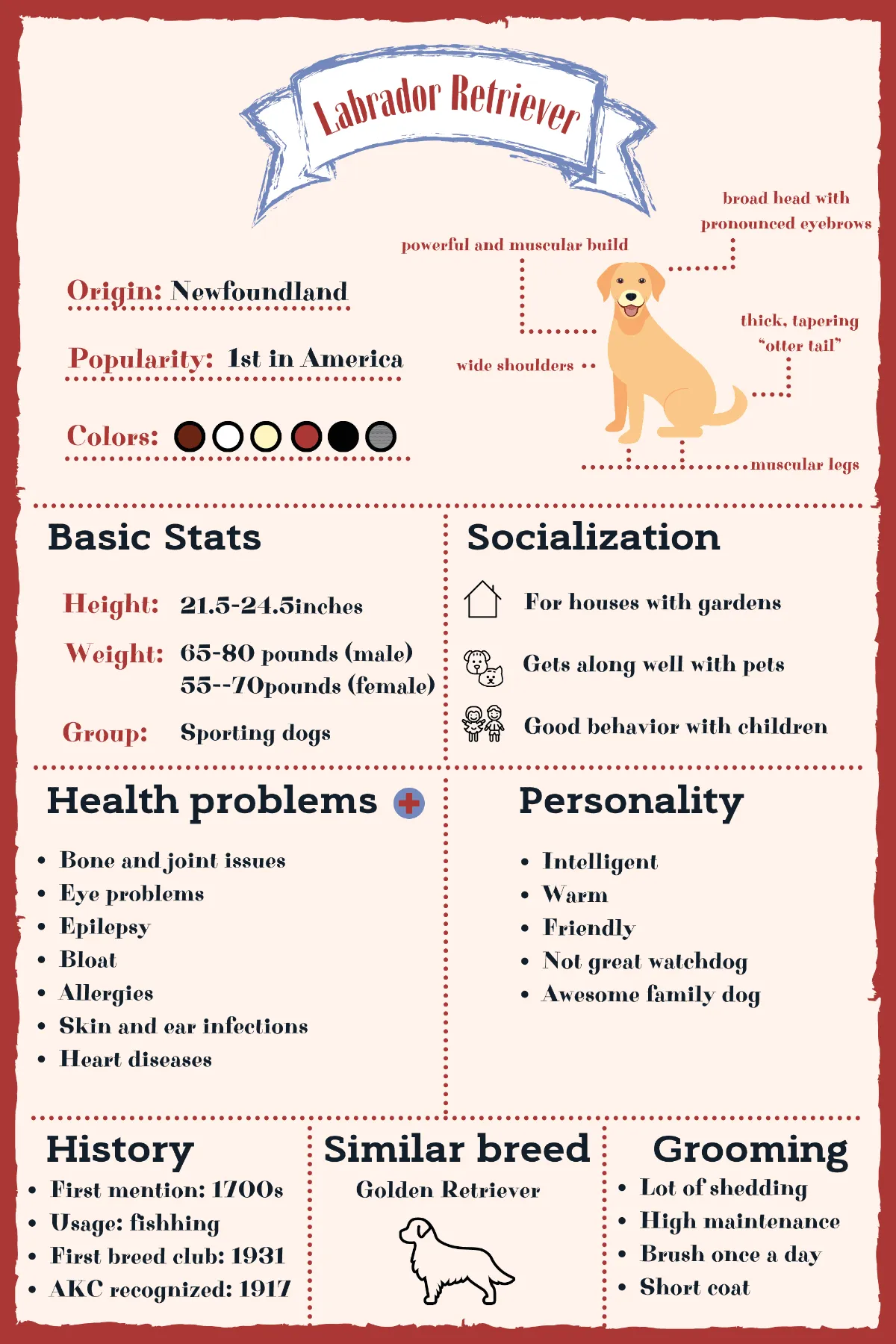
Basic stats:
- Height: 22.5-24.5 inches (male) and 21.5-23.5 inches (female)
- Breed Group: Sporting Dogs
- Weight: 65-80 pounds (male), and 55-70 pounds (female)
- Life span: 10-12 years
About Labrador Retrievers in brief
This breed has been the most popular in the US for years and is also the most popular breed registered with the American Kennel Club. Even people who don’t like or keep dogs know this breed and its appearance.
Labradors are athletic and muscular. Their hair is short and easy to care for. These dogs are very kind, friendly, and intelligent. They are people-oriented and love their family very much.
They originated on the island of Newfoundland, off the northeast coast of Canada. Originally, this breed was bred to help with fishing. They helped to haul nets, to fetch ropes, and retrieve escaping fish.
Nowadays, Labradors have different working roles. People prefer to take advantage of the personality of these dogs. They are more of people’s dearest friends and family members. Also, they prove to be excellent therapy dogs in elderly homes and hospitals. Plenty of them will be assistance dogs who are helpers for people with disabilities.
Due to their abilities and athletic built, they are also suitable for hunting, searching, and rescuing. Labs often win dog competitions where intelligence plays a major role.
Unfortunately, this breed is not good for watchdogs. Because of their kindness, the Labradors may allow all intruders into the house area. But other than that, these dogs are wonderful companions and friends.
History of Labrador retrievers
As I wrote above, the Labradors are from the island of Newfoundland off the northeast coast of Canada. People have been benefiting from their abilities since the 1700s. From the beginning, they helped the fishermen as working dogs. Then they returned home to the family in the evening.
According to many, this breed was created by inbred the Newfoundland dog and a smaller local waterdog.
People outside the country have also noticed the abilities of these dogs. Some Labradors were imported to England to act as hunting dogs. This happened around 1830, by the second Earl of Malmesbury. And the second Earl of Malmesbury named these dogs Labradors.
This breed was almost extinct in the 1880s. With the help of the Malmesbury family, among others, they were rescued. At their place of origin in Newfoundland, these dogs have disappeared. This was due to government restrictions and tax law. A family could only keep one dog, and more taxes had to be paid for female dogs.
However, as I wrote, the Labradors survived and were recognized by the American Kennel Club as a distinct breed in 1903. Early Labs were imported by sportsmen from England to America in the 1920s and 1930s.
The breed has been gaining popularity since World War II. In 1991, this dog became the most popular in America. This success of theirs has been unbroken ever since.
These dogs are currently used in many areas due to their versatility. Drug and explosive detection, search and rescue, therapy, assistance to those with disabilities, and hunting. These are just a few examples. Due to their intelligence, they are frequent participants in various competitions. Examples include the show, field, agility, and obedience competitions.
Some Interesting Facts About Labrador Retrievers
- They are not from Labrador but from Newfoundland.
- Labs are one of the most popular guides and rescue dog breeds.
- One of the oldest found Labrador pedigrees is from 1878.
- Labradors are virtually extinct at their place of origin due to local laws.
Personality
It is no coincidence that this is the most popular breed in America. Everyone likes the personality of these dogs. They are friendly and nice to people and other animals. Also, they are very intelligent and easy to train.
Labs are very active and have a lot of energy, so training is especially needed. They need both physical and mental tasks. This will prevent them from getting bored and this way they will be happy.
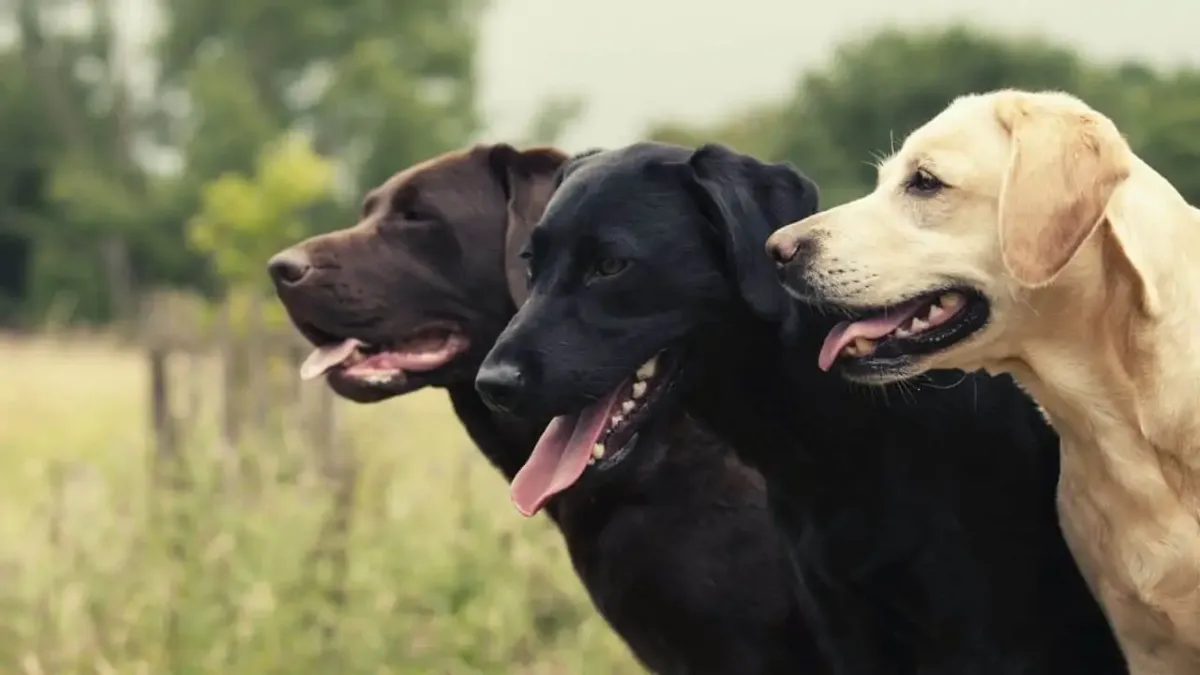
Health care
Overall, Labradors are healthy dogs. But there are some diseases that can occur in this breed. Of course, not all diseases from the list below will happen. In fact, maybe none of them will happen to your pup. However, it is worth being aware of these when talking about this breed.
- Hip dysplasia: Hip dysplasia is a common disease in dogs anyway. This condition is usually hereditary. The point is that the thighbone does not fit properly into the hip joint. The symptoms can be very varied. Some dogs show pain and lameness. And some do not even feel any discomfort. Over time, arthritis may even develop. X-ray screening that detects hip dysplasia is performed by the Orthopedic Foundation for Animals or the University of Pennsylvania Hip Improvement Program. As I mentioned, this health condition is hereditary, so these dogs should not be bred.
- Elbow dysplasia: It is also an inherited disease. It is likely that the three bones that make up the elbow grow differently. This leads to joint laxity. Symptoms include pain and lameness. Treatment can include surgery and painkillers.
- Osteochondritis Dissecans: In this orthopedic condition, the cartilage does not grow properly. Usually, it occurs in the elbows and shoulders. As a result, the joints stiffen. Sometimes it’s so severe that dogs can’t bend their elbows, for example. This disease can be detected in puppies up to 4-9 months old. The exact cause is unknown. Experts say too much growth formula and excessive protein intake can cause this condition.
- Cataracts: This condition also occurs in humans. Cloudy spots develop on the eyepieces of dogs. These can grow over time. Cataracts can develop at any age. In many cases, it does not affect vision, but sometimes it severely impairs it. Dogs with cataracts are not recommended for breeding. The condition can be improved with surgery, usually with a good chance.
- Progressive Retinal Atrophy: It is also an eye disease where the retina continues to deteriorate. Dogs lose their night vision and later their daytime vision as well. Otherwise, they can adapt well to the situation if their environment does not change.
- Epilepsy: Epilepsy is associated with seizures of varying severity. Strange behaviors can exhibit seizures. Fortunately, seizures can be accurately predicted in dogs with idiopathic epilepsy. However, it is worth knowing that seizures are not just signs of epilepsy. They can also occur due to tumors, head injuries, metabolic disorders, poisonings, or infections. If your dog has seizures, take him to the vet immediately.
- Tricuspid Valve Dysplasia: It is a heart disease that unfortunately occurs more and more often in Labradors. The condition’s essence is a malformation of the tricuspid valve on the right side of the heart. Its severity can vary. Some dogs can live with this disease, some die. It can be detected by ultrasound. Research is still underway to treat and learn about it.
- Myopathy: It is a disease of the muscles and nervous system. The first symptoms can appear as early as six weeks of age. Symptoms include fatigue and stiffness. Exercise can worsen the condition. Over time, dogs with this disease can barely walk. Appropriate treatment has not yet been developed. However, a lot of rest and keeping the body warm will help relieve the symptoms. Myopathy is also considered hereditary, so it is not recommended to breed these dogs.
- Gastric Dilatation-Volvulus: Many people call this condition bloat. It usually occurs in large-bodied deep-chested dogs. The trigger may be eating once a day, eating rapidly, drinking a large amount of water, or exercising after eating. In this case, the stomach is distended with air and then twists. Dogs have a hard time getting rid of excess air. Therefore, blood flow to the heart will be blocked. It can even be fatal. Symptoms can include a distended abdomen, drooling, depression, lethargy, and a rapid heart rate. If you suspect bloat, take your dog to a veterinarian immediately.
- Acute Moist Dermatitis: It is a skin condition where the skin is red and has some kind of inflammation. A bacterial infection usually causes it. The treatment can be simple. For example, hair clipping, antibiotics, or medicated shampoos used for this purpose.
- Cold Tail: It is a benign but painful disease that usually goes away in a few days. Experts say this can be a problem with the muscles in the tail vertebrae.
- Ear Infections: Labradors love water. However, because of this, they can catch various ear infections. This can be prevented by regular checking and cleaning.
Today, breeders have access to modern DNA and other tests to screen for and control these diseases.
Feeding and nutrition
As with all dogs, make sure you buy high-quality dog food for your Labrador. The daily amount is about 2.5-3 cups per day. It is best to divide this into two parts during the day. Of course, the amount required depends on the dog’s sex, age, and activity.
So a less active dog needs to consume fewer calories. Labradors tend to eat too much, so don’t leave food out for them all day. Have two feeding times during the day and stick to it. Don’t let your dog gain too much weight.
If the ribs are easy to feel, then your dog’s weight is ideal. Suppose you can’t feel the ribs, less food, and more exercise needed. Your veterinarian will also be able to help determine the right amount.
Treats can be good during training, but make sure your dog doesn’t eat too much of these. Make sure you always provide your dog with fresh water.
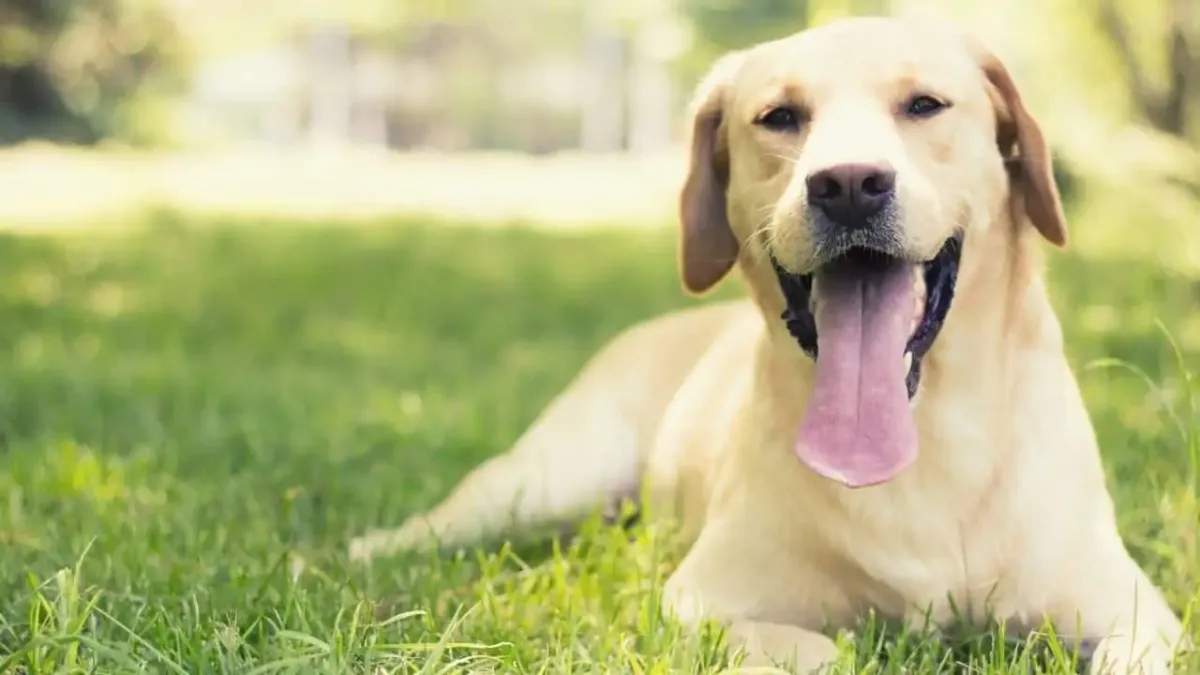
Coat and Grooming
Shorthaired Labradors have a two-layer coat. The coat on the top is short, thick, and straight. The undercoat is soft and weather-proof.
Labs come in three colors. These are chocolate brown, black and yellow. Also, there are also different variations of yellow, such as polar white and fox red (Polar white is an unofficial color. Don’t be fooled. If a breeder wants to sell a dog more expensive, by referring to the white coat, don’t believe him). In the past, black was a favorite breeder, but today, yellow and chocolate brown are more common.
Grooming is effortless with this breed, but they do shed a lot. You need to vacuum a lot because of them and brush them every day. It would help if you bathed your Lab at least every two months. Of course, if he’s dirty for something, you need to do it more often.
It is recommended to brush his teeth daily, but at least 2-3 times a week. This will remove tartar buildup and bacteria. Nails are worth trimming once or twice a month. So-called dog nail grinders can also help, as they are usually less dreadful than nail trimmers.
As I wrote above, ear infections are common in Labradors. You can prevent this with frequent checking. With a cotton ball and a pH-balanced ear cleaner, wipe your dog’s ears out. This is also worth doing after a bath and swimming.
It’s worth getting your puppy used to these grooming activities early on. Frequent checking and proper care can prevent a lot of harmful conditions.
Exercise
The Labrador is a very active, agile, and energetic breed and needs a lot of exercise throughout the day. If these dogs do not exercise enough, they will divert their accumulated energies elsewhere. This can cause some bad behavior in your apartment, for example.
Labs love retrieving, swimming, or hunting. In addition, they like to participate in sports such as agility, obedience, tracking, and dock diving. They often play a useful role as working dogs, such as search-and-rescue dogs and drug and bomb detection dogs. But they also do an excellent job as service and assistance dogs.
As you can see, Labradors have an enormous amount of abilities. These skills are worth taking advantage of, and on top of that, they require them.
Training
Of course, it is worthwhile for all dogs to start socializing and puppy training as soon as possible. However, for Labradors, this is especially important due to their high energy levels and physical strength.
The whole process should be started gradually. Between the ages of 7 weeks and 4 months, they can be introduced to strangers and situations. In parallel, obedience training can be started. This contributes to these puppies becoming well-behaved adults.
Puppy training classes can be an integral part of the whole socialization process. Whit this training, owners can recognize and correct bad habits.
Involve your Labrador in family activities as soon as possible.
Behavior with children and other pets
Labradors are amiable animals. They simply love children. Of course, they need to be taught how to behave in different situations. However, they learn very quickly and are guided by the love within them.
Of course, kids also need to learn how to deal with dogs. It would be best if you did not leave a small child unattended, even with the friendliest dog. If your kids are learning how to approach and pet a dog, the situation can be different.
How Labradors behave with other pets depends on how much exposure they received from other dogs, cats, or other animals at an early stage.
Summary
As you can see from my article, these dogs have a lot of positive qualities. No wonder it is one of the most popular breeds not only in America but in the world. With proper care, attention, and training, a Labrador can be the best possible family member. But if you need a versatile working dog, you won’t be disappointed in this breed either.
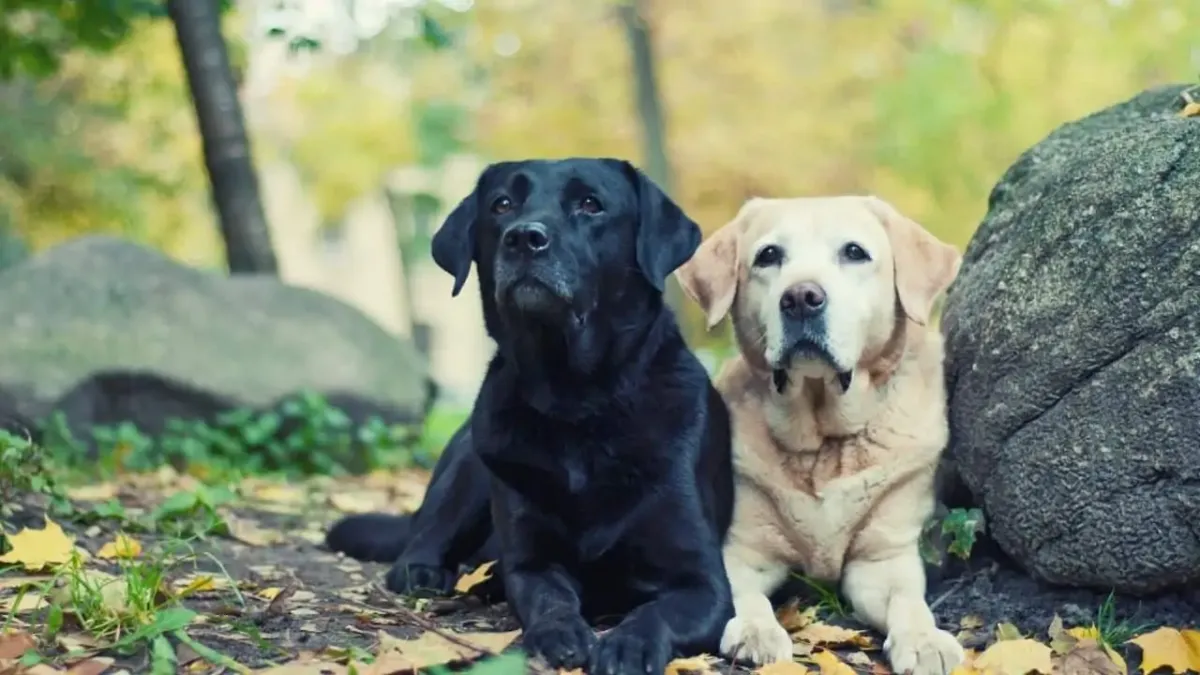
Frequently asked questions about the Labrador Retriever
Is a Labrador retriever a good family dog?
I can clearly say that Labrador is one of the best family dogs. They are kind, friendly, and intelligent. Make sure they are given the right amount of activity.
Do Labrador retrievers bark a lot?
This is difficult to predict, as it depends on a lot of things. Like other breeds, Labradors bark more if they don’t get enough physical and mental stimulation.
Can Labradors be left alone?
Of course, a lot of things can be taught to a Labrador. That way they can learn that too. However, it is not advisable to leave them alone for long hours.

